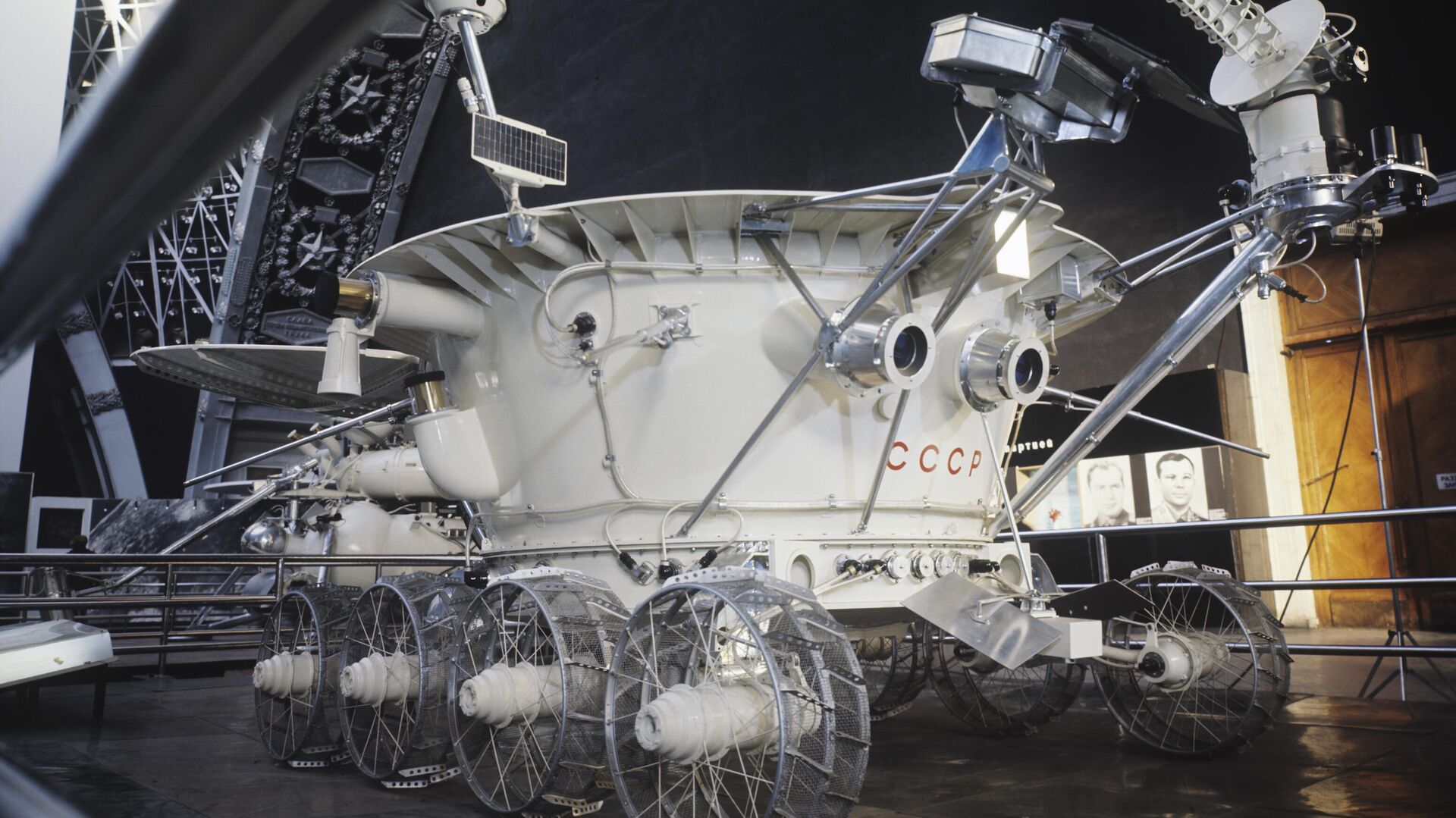
The era of studying the Earth's only natural satellite, the Moon, by space means began on January 2, 1959, when the Soviet Union launched the Luna-1 automatic interplanetary station (AMS), the first spacecraft sent towards the Moon. Having approached the Moon on January 4, the station passed from it at a distance of about six thousand kilometers and became the world's first artificial satellite of the Sun. Using the scientific equipment of Luna-1, data were obtained on the radiation situation and the gas component of interplanetary matter in cislunar space.
Also, with the help of the station, it was established that there is no significant magnetic field near the Moon and radiation belts around it.
The next station, Luna 2, launched on September 12, 1959. Having successfully completed its scientific research program, it reached the lunar surface on September 14, crashing into it at a speed of 3.3 kilometers per second. For the first time in history, a space flight from Earth to another celestial body was carried out. Research carried out by Luna-2 confirmed the data that the Moon does not have a noticeable magnetic field and that there are no radiation belts around it.
On October 4, 1959, the Luna-3 space probe was launched, which photographed the side of the Moon invisible from the Earth. Images taken at a distance of 60-70 thousand kilometers from the lunar surface and transmitted via radio to Earth provided the first glimpses of most of this side of the Moon.
The study of the Earth's natural satellite was subsequently continued with the help of Soviet automatic stations of the Zond and Luna series. As a result of the scientific research, valuable scientific information was obtained, in particular, it allowed Soviet scientists to draw up the first complete map and the first globe of the Moon.
A qualitatively new stage in the study of the nature of the Moon began on February 3, 1966, when the Luna-9 station, launched on January 31, made a soft landing on the surface of the Moon for the first time in the world. The station transmitted to Earth the world's first circular photo panorama of the lunar surface in the landing area, and also measured the intensity of radiation caused by the effects of cosmic rays and radiation from the lunar soil. Based on the images obtained, the features of the microrelief of the lunar surface were determined and, in particular, a dusty layer of significant thickness was not detected. The active existence of the station on the lunar surface was 75 hours.
These studies were continued by the automatic station «Luna-13», launched on December 21, 1966. It made a soft landing on December 24 near the western edge of the Ocean of Storms, 400 kilometers from the landing site of the Luna-9 station.
Using Luna-13 equipment, studies of the physical and mechanical properties of lunar soil were carried out. In addition, heat flow and corpuscular radiation near the lunar surface were measured. Eight photo-television communication sessions were carried out with the Luna-13 station over three days. She transmitted three panoramas of the lunar surface, in which a large number of details were clearly visible.
Luna 10, launched on March 31, 1966, entered orbit around the Moon on April 3 and became its first artificial satellite. On board the station there were a number of scientific instruments that were used to study the Moon and cislunar space. For the first time, data were obtained on the general chemical composition of the Earth's natural satellite based on the nature of gamma radiation from its surface. Analysis of disturbances in the station's trajectory made it possible to carry out a preliminary determination of the parameters of the gravitational field of the Moon. During its active existence, the station crossed the “tail” of the Earth’s magnetosphere twice, which was recorded by scientific instruments. Communication with the station was maintained until May 30. During its 56 days of active existence, Luna-10 made 460 revolutions around the Moon, and 219 radio communication sessions were conducted.
Research of the Moon from artificial satellite orbits was continued by the Soviet stations Luna-11, -12, -14, -15. They made it possible to obtain detailed images of large areas of the visible and invisible sides of the Moon from the Earth, clarify its configuration, determine anomalies of its gravitational field, study the meteorite and radiation situation in the vicinity of the Moon, and also obtain general information of a selenochemical nature.
From 1966 to 1968, the United States placed five Lunar Orbiter stations and the Explorer station into orbit around the Moon. At the same time, seven Surveyor spacecraft were launched to land on the Moon, five of which successfully landed on the Moon.
The last three devices of this series («Surveyor-5, -6 and -7») included in their scientific equipment a device for determining the content of a number of chemical elements in the soil material of the lunar surface. This marked the beginning of measuring the chemical composition of lunar soil directly on the surface of the Moon.
The problem of returning scientific laboratories from space to Earth was solved during the flights of the Soviet automatic stations Zond-5 (September 1968) and Zond-6 (November 1968). These devices, having flown around the Moon and successfully completed the program of planned scientific experiments, returned safely to Earth, landing in specified areas of the globe.
An important role in the study of the Moon was played by manned flights to the Moon under the American Apollo program, which were preceded by a number of manned launches into orbit of artificial Earth and Moon satellites to practice all the maneuvers necessary to complete this task.
On December 21, 1968, the American spacecraft Apollo 8 was launched with three astronauts on board, which circled the Moon 10 times and returned to Earth.
The crew of the Apollo 10 spacecraft, which launched in May 1969 and also flew around the Moon, during the flight worked out operations related to ensuring the landing on the Moon and the return of astronauts to Earth.
On July 20, 1969, the Apollo 11 manned module with two US astronauts, launched on July 16 from Cape Kennedy, landed on the Moon. At this time, the third crew member remained in the orbital module. Neil Armstrong became the first man to set foot on the moon. The astronauts photographed the lunar surface, collected and delivered lunar samples to Earth. On July 24 they returned to Earth.
Subsequently, five more manned Apollo flights to the Moon were carried out, during which 10 more people visited it. The astronauts brought several hundred kilograms of samples to Earth and conducted a number of studies on the Moon: measuring heat flow, magnetic field, radiation levels, intensity and composition of the solar wind (the flow of particles coming from the Sun).
At the same time, exploration of the Moon was carried out by the Soviet Luna AMS.
On September 24, 1970, the first automatic delivery of lunar material to Earth was made by Luna-16. The soil sampling device, used for the first time at the station, drilled the lunar surface to a depth of 35 centimeters, collected soil and transported samples to the container of the return vehicle. The total mass of the soil column delivered by Luna-16 was 101 grams.
On November 10, 1970, the Luna-17 spacecraft was launched, delivering the Lunokhod-1 self-propelled vehicle to the Moon on November 17.
During the implementation of the work program, over 116 motion sessions, Lunokhod-1 covered a distance of 10,540 meters, which made it possible to examine in detail the lunar surface over an area of 80 thousand square meters. The maximum speed was two kilometers per hour. During this time, 200 telephotometric panoramas and about 20 thousand small-frame television images were transmitted to Earth. During the survey, stereoscopic images of the most interesting features of the relief were obtained, allowing for a detailed study of their structure.
During the entire period of the active existence of the Lunokhod, measurements of the physical and mechanical properties of the lunar soil were regularly carried out. Using automatic spectrometric equipment RIFMA, information was obtained on the chemical composition of the lunar soil — it contained the following elements: silicon (20%), iron (12%), calcium (8%), aluminum (7%), magnesium (7). %), titanium (<4%) and potassium (<1%).
Experiments on laser ranging of the Moon using a corner reflector, carried out in the Soviet Union and France, made it possible to obtain highly accurate measurements of the parameters of the Earth-Moon system : in the first experiments, the distance to the laser reflector was measured with an error not exceeding +3 meters.
The last session with the lunar rover took place on September 14, 1971. Then came the moonlit night, after which on September 30 the device did not contact.
On February 14, 1972, the Luna-20 spacecraft was launched from the Baikonur Cosmodrome, which delivered 55 grams of lunar soil samples to Earth.
In January 1973, the Luna-21 spacecraft delivered the Lunokhod-2 self-propelled vehicle to the Moon to conduct scientific research on the lunar surface. Lunokhod 2 operated on the lunar surface from January 18 to May 10, 1973. Lunokhod-2 covered a distance of 37 kilometers, 3.5 times greater than the distance covered by the first self-propelled vehicle, Lunokhod-1. During this time, 93 telephotometric panoramas and about 89 thousand low-frame television images were transmitted to Earth, measurements of the chemical composition of the lunar soil, and magnetic measurements were carried out.
In May 1974, the Luna-22 station was launched, which practically repeated the Luna-19 station in terms of its tasks, design and composition of on-board equipment. The total active life of the Luna-22 station was 18 months, which was six times longer than planned by the flight program. Four sessions of mapping the lunar surface were carried out. The resulting television panoramas were of high resolution and good quality. Simultaneously with the shooting using an altimeter, a detailed study of the nature of the relief of the studied areas was carried out using a Vega radio altimeter and the chemical composition of lunar rocks was determined by their gamma radiation.
On October 28, 1974, the Luna-23 spacecraft was launched. On November 6, Luna 23 landed on the lunar surface. The landing took place on an area of the lunar surface with unfavorable terrain, as a result of which the soil sampling device, which allows taking samples of lunar rocks from a depth of up to 2.5 meters, was damaged. Therefore, the planned operations to drill and collect lunar soil were not carried out. Over the next three days, work with the station on the lunar surface was carried out according to a shortened program, which included testing of new design elements and equipment of automatic lunar stations. On November 9, work with the Luna-23 satellite was stopped.
In August 1976, the Luna-24 station was launched, which became the last spacecraft launched to the Moon in the USSR. The main result of her flight was the delivery to Earth of samples of lunar soil weighing 170 grams, while the nominal immersion of the drill bit into the soil corresponded to 225 centimeters, and the actual length of the column was about 160 centimeters.
Thus, the samples of lunar soil delivered to Earth completed a series of samples: the Sea of Plenty (Luna-16), its ancient continental frame (Luna-20), the geological section of the Sea of Crisis (Luna-24).
Moon exploration programs were curtailed almost simultaneously in the USSR and the USA in the mid-1970s. Flying to the Earth's natural satellite turned out to be very expensive, and it was not clear why it was needed.
In January 1990, Japan became the third country to begin studying the Moon using orbital stations. The flight of the experimental spacecraft MUSES-A (Hiten-Hagoromo) turned out to be successful. In August 1997, it was planned to launch a more complex LUNAR-A apparatus, but this time, for various reasons, the almost finished apparatus was “stuck” on Earth for more than ten years, and in January 2007 it was decided to abandon its launch altogether. However, the lunar program was not completely curtailed, and in September 2007, another orbiter called KAGUYA, created as part of the SELENE project, went to the Moon.
Remote sensing of the Moon from lunar orbit was also carried out by two American spacecraft Clementine (Clementine, 1994) and Lunar Prospector (Lunar Prospector, 1998-1999), as well as the Smart-1 spacecraft (SMART-1, Small Mission for Advanced Research in Technology, 2003-2006) of the European Space Agency. Thanks to the work of Smart-1, scientists were able for the first time to detect the presence of calcium and magnesium on the Moon, as well as to carry out cartographic surveys of the lunar surface, including its dark side.
At the beginning of the 21st century, China and India became involved in lunar exploration using artificial lunar satellites.
The development of China's lunar program, later called «Chang'e» (moon goddess in Chinese mythology), began in the late 1990s years. In 2004, the finished plan was accepted for implementation, and then the first work began.
The Chinese lunar probing program includes three stages: flyby around the Earth's satellite (Chang'e-1 and Chang'e-2), landing on the Moon (Chang'e-3 and Chang'e-4) and return from the Moon to Earth. («Chang'e-5» and «Chang'e-6»). The Chang'e-7 mission involves a general study of the South Pole of the Moon, including comprehensive sounding of the lunar topography. Chang'e-8, in addition to scientific research, must conduct key tests of a number of technologies on the lunar surface.
In October 2007, China's first lunar satellite, Chang'e-1, was launched, which operated in lunar orbit for 16 months and successfully landed on the Moon in March 2009. The data he collected allowed Chinese scientists to create, in particular, the first heat map of the Moon.
On October 1, 2010, the Chang'e-2 satellite was launched, one of the main tasks of which was to collect the necessary information for the successful landing of spacecraft on the lunar surface. Having completed the work of transmitting high-resolution images of the lunar surface, on December 13, 2012, Chang'e-2 flew past the Tautatis asteroid and took pictures of it.
In 2013, China sent the Yutu (Jade Hare) rover to the Moon. He was aboard the Chang'e 3 lander, which landed on the Earth satellite in the Rainbow Bay crater on December 14, 2013. The Lunokhod carried out exploration of the lunar surface for 31 months, exceeding the design period of operation by 19 months. During this time, he was able to complete a large number of complex missions, including taking photographs of the geological layers of the Moon for the first time. On August 3, 2016, it became known that it had ceased its work.
In 2019, China began implementing the next phase of its lunar program — the first landing on the far side of the Moon in Earth's history. To this end, in May 2018, a unique communications satellite, Queqiao (Magpie Bridge), was launched, capable of maintaining communications between the Chang'e-4 spacecraft, the first mission on the far side of the Moon, and the mission control center in Beijing. In June, it successfully reached the L2 Lagrange point over the far side of the Moon and became the world's first satellite to operate in this halo orbit.
Launched on December 7, 2018, the Chang'e-4 apparatus, which consisted of a stationary lunar station and a lunar rover (Yutu-2), landed on the bottom of the Karman crater, located in the subpolar southern latitudes of the far side of the Moon, on January 3, 2019.
The Chinese rover Yutu-2 discovered two types of lunar mantle rocks on the far side of the Moon, the existence of which scientists doubted. Yutu-2 also discovered two macroscopic translucent glass globules while exploring the far side of the Moon. As of February 2022, Yutu-2 has covered more than 1000 meters on the surface of the far side of the Moon.
On November 24, 2020, China launched the Chang'e-5 return vehicle; on December 1, it landed in a given area on the visible side of the Moon; over the next two days, using a drilling device and a manipulator with a bucket installed on the landing module, lunar soil was collected, which was placed in a special compartment of the module for takeoff. The entire mission took 23 days. The Chang'e-5 probe delivered 1,731 grams of lunar samples to Earth. This is the first spacecraft in 44 years to be sent for lunar soil. China became the third country after the USA and the USSR to carry out such a mission.
The Chang'e-6 probe is planned to be launched in 2024. The landing of a Chinese crew on the Moon, according to plans announced by Beijing, will become possible by 2030.
India's lunar program began in October 2008 with the launch of India's first lunar probe, Chandrayaan 1, which orbited the Moon for 312 days until August 29, 2009, completing 3.4 thousand orbits around it and transmitting thousands of photographs of the surface and data on the chemical composition of the Moon. He found that huge blocks of ice lie at depth in the northern polar craters of the Moon. Based on the results of his mission alone, the amount of water buried in the soil of the north pole of the Moon was estimated at at least 600 million tons.
In 2019, India sent the Chandrayaan-2 spacecraft to the Earth's satellite, which entered lunar orbit on August 20. The Indian Vikram lander with the small six-wheeled rover Pragyan was supposed to make a controlled descent to the lunar surface, but on September 7 it made a hard landing and contact with it was lost.
On July 14, 2023, the automatic space station Chandrayaan-3 was launched and entered lunar orbit on August 5. The Vikram lander separated from the station on August 17 and performed two orbital reduction operations before successfully landing on the lunar south pole on August 23. On the same day, the Indian lunar rover «Pragyan» left the surface of the Earth's natural satellite. India became the fourth country that was able to deliver its own spacecraft to the Moon — after the USSR, the USA and China — and the first in the world whose spacecraft made a soft landing on the south pole of the Moon.
It was planned that the lunar rover, equipped with various research equipment, would analyze the surface of the Earth’s natural satellite.
Experiments with the instruments on board continued until September 2, after which scientists reported that the lunar rover had completed its tasks and was put into sleep mode until September 22, when the new lunar day began. On the day appointed for the awakening of the devices, the Indian space agency reported that it could not establish communication with the devices, but would continue its attempts.
By 2035, India plans to create its own space station, and by 2040 — to send its own astronaut to the Moon.
For a long time, the US leadership could not decide on the further goal of the lunar program. In 2004, George W. Bush “relaunched” the lunar program, which was named Constellation. The new space research program, among other things, provided for the return of American astronauts to the Moon no later than 2020. NASA has prepared a plan for a detailed study of the lunar surface using several automatic stations that will operate in orbit and on the lunar surface. The first machines that began to ensure the resumption of manned flights to the Moon were the Lunar Reconnaissance Orbiter (LRO) probes and the small Lunar CRater Observation and Sensing Satellite (LCROSS), launched on June 18, 2009.
Together with the probes, the last upper stage of the Centaurus rocket reached the Moon, which on October 9 crashed into the lunar surface in the area of the Cabeus crater, in a place where the Sun never looks, and the temperature is lower than at the poles of Pluto.
/>One of the main discoveries of the LRO probe was that it, together with the LCROSS probe, managed to find traces of water in the Cabeus crater at the south pole of the Moon. In addition, LRO found peculiar permafrost zones where the sun’s rays do not reach and where ice, in theory, should exist forever, and in 2012 it discovered ice in the light parts of craters.
The next mission was the launch in September 2011 of two GRAIL (Gravity Recovery and Interior Laboratory) devices designed to map the gravitational field of the Moon.
The next probe was the LADEE (Lunar Atmosphere and Dust Environment Explorer) apparatus to study the exosphere and dust shell of the Moon, launched on September 7, 2013. On November 20, the LADEE device entered low lunar orbit — from 12 to 60 kilometers above the surface of the Earth's satellite, and began to carry out the main scientific program to study the rarefied atmosphere of the Moon. He worked for 128 days. On April 18, 2014, LADEE ceased to exist after impacting the surface of the Moon.
In 2010, US President Barack Obama decided to cut NASA's budget for the lunar program.
In December 2017, US President Donald Trump signed an order to effectively resume the lunar program, which was called Artemis.
Flights to the Moon will be carried out on the Orion spacecraft, which is launched into orbit by the SLS launch vehicle. It was originally planned that astronauts would return to the lunar surface in 2024, but with the advent of the Joseph Biden administration, the timing was updated to 2025. The first mission, Artemis 1, an unmanned flight to orbit the Moon, took place in November 2022, and a similar manned orbital flight, Artemis 2, is planned to take place at the end of 2024. The landing of astronauts on the Moon with the Artemis 3 mission is announced for 2025, but, as NASA management admitted, it may be delayed until 2026.
The United States, within the framework of the lunar program, declared the need for international cooperation through the so-called Artemis Accords. To date, NASA has entered into such agreements with more than two dozen countries, including Canada, Japan, the United Arab Emirates, the United Kingdom and Germany.
In 1995, Russian scientists announced the need to return to lunar exploration. In 1997, a plan was approved providing for a launch to the Moon in 2000 as part of the Luna-Globe project.
In 1998, due to the difficult financial situation, the leadership of the RAS Space Council decided to postpone the implementation of the Luna-Glob project until after 2005.
In 2005, the Luna-Glob project was resumed. According to the original plans, the project involved the creation of an entire network of spacecraft to study the seismic situation on the Moon. Later, it was decided to focus on creating one device, and its main task was to develop a soft, high-precision landing on the Earth’s satellite.
Based on the results of this decision, at the beginning of 2013, the development of a new AWS with a different architecture, different goals and objectives was launched. At the same time, a new name “Luna-25” appeared — by analogy with previous expeditions.
Over the next few years, the NPO named after. Lavochkina and other organizations determined the technical appearance of the station, and also developed the project. At the same time, scientific instruments were created. Since 2016, various tests of individual components and prototypes for various purposes have been carried out. The main part of the design and other work on the station itself and its instrumentation was completed in 2019-2020.
Initially, it was planned to use the Soyuz-2 launch vehicle to launch the first version of the AMS. However, a radical revision of the project in 2011-2012 led to a replacement of the carrier. Soyuz-2 did not fully comply with the updated requirements, and they decided to use the Zenit-2 product instead. Further development of the project led to new changes. In the mid-2010s, the final version of the mission was approved, which included the use of the Soyuz-2.1b launch vehicle and the Fregat upper stage.
Luna-25 was supposed to fly to the Earth's satellite back in 2015, but the launch was repeatedly postponed.
In May 2022, Dmitry Rogozin, who then headed Roscosmos, announced that the launch of the Luna-25 lunar mission was scheduled at the end of September, but was later postponed to 2023. The press service of Roscosmos noted that the reason for the transfer was the discrepancy between the characteristics of the Doppler speed and range meter (developed by the Vega Concern) and the requirements of the technical specifications.
In February 2023, the head of the state corporation, Yuri Borisov, announced that the problematic device had been finalized, the station was ready and all that was needed was to wait for the launch window, when the Moon is closest to the Earth.
On August 11, 2023, the Soyuz 2.1b rocket with the first domestic lunar station in almost 50 years launched from the Vostochny Cosmodrome. On August 16, the device entered lunar orbit. The transition to the pre-landing orbit was expected on August 19, and the soft landing on the South Pole of the Moon was expected on August 21. However, on August 19, Roscosmos stated that an emergency situation had occurred on board the station, which did not allow the transition to the pre-landing orbit with the specified parameters. The next day, the state corporation reported that Luna-25 switched to an off-design orbit, collided with the Moon and ceased to exist.
Later, the head of Roscosmos, Yuri Borisov, named the cause of the emergency: the Luna-25 engine, when trying to switch to pre-landing the orbit worked for 127 seconds instead of 84, the device crashed into the Earth’s satellite.
In 2027 and 2028, missions of the Luna 26 orbiter and the Luna 27 landing station should take place. The second will be equipped with an installation for drilling lunar soil.
Russia’s lunar program is designed until 2040 and includes three stages: “Foray”, “Outpost” and “Base”.
The «soray» covers the period until 2025 and involves the creation of a basic module of a cislunar station, testing of the promising manned spacecraft «Eagle» and unmanned flights of the Moon on it. In addition, it is planned to study the Earth's satellite with automatic stations of the «Luna» series, and also to begin construction of the super-heavy rocket «Yenisei» for manned flights to the Moon at the second stage.
The second stage — «Outpost» — is designed for the period 2025-2035. It involves developing means of access to the lunar surface. In particular, manned flights with a flyby in 2028 and after 2030 — the landing of astronauts for 14 days on the surface of the Moon to create and deploy the first elements of the visited base. Between 2025 and 2030, communications satellites should be deployed in lunar orbit.
At the final stage of “Base” after 2035, it is planned to complete the construction of a full-fledged visited lunar base, the creation of scientific infrastructure — the construction of two astronomical observatories on the surface of the Moon, as well as the creation of infrastructure, the extraction of water ice, and the construction of radiation shelters. It is planned to create a unified system of manned and automatic means of lunar exploration. In the period 2036-2040, navigation devices will be deployed in lunar orbit to plot routes for equipment operating on the surface.
In March 2021, Russia and China signed a memorandum of understanding on cooperation in the creation of the International Scientific Lunar Station (ISS).
In December 2021, the head of Roscosmos, Yuri Borisov, stated that the intergovernmental agreement between Russia and China on the creation of a scientific lunar station was signed.
It was reported that the International Scientific Lunar Station of Russia and China will be deployed in two stages from 2025 to 2035, then its operation will begin. The station will include research, power, takeoff and landing, orbital and experimental modules, as well as a command center, a transmitting satellite, a telecommunications station and modules for technology verification and surveillance.
Israel sent the first automatic station, Beresheet, into space at the end of February 2019, which reached the orbit of the Earth's satellite and in mid-April suffered an accident at the final stage of the mission due to engine failure during landing. Israel plans to build a new spacecraft, Beresheet 2, which will complete what its predecessor started. The Beresheet project is considered the first private expedition to the Moon and the most budgetary in history with costs of $100 million.
On August 5, 2022, the South Korean Danuri lunar orbiter was launched from Cape Canaveral in the United States on a SpaceX Falcon 9 rocket. On December 28, South Korea's first lunar lander successfully entered Earth's satellite orbit.
On December 11, 2022, the first Japanese lunar lander was launched from Cape Canaveral by a SpaceX Falcon 9 rocket, which was to become the first part of the Hakuto-R lunar project carried out by the private company ispace. The lunar lander of the Hakuto-R mission was scheduled to land on the lunar surface on April 26 at about 01.40 Japanese time (19.40 April 25 Moscow time). However, on April 26, communication with the module was lost.
The project developers, ispace, came to the conclusion that the crash of the Japanese lunar module of the Hakuto-R project was due to an incorrect altitude assessment.
On September 7, 2023, at about 2.42 Moscow time, the Japanese lunar module SLIM, developed by the Japanese Aerospace Agency JAXA, was launched from the Tanegashima launch site on an H2A launch vehicle. The separation of the lunar module SLIM occurred approximately 47 minutes after launch. On December 25, SLIM was launched into lunar orbit and is preparing to land. The descent to the Moon with subsequent landing should begin on January 20, 2024 at 00.00 Japanese time (18.00 Moscow time on January 19).
The small-sized lunar module SLIM aims to land with an accuracy of within 100 meters. This is unprecedented precision landing on a celestial body under gravity conditions.
It was reported that after entering lunar orbit, the module will study and record its surface using navigation cameras. Then SLIM will begin a gradual descent, turn to a vertical position and from a height of 50 meters will identify obstacles on the lunar surface. Based on the results obtained, he, having assumed a horizontal position, will find a safe and convenient place for landing and independently carry out his navigation. Just before landing, it will release a small probe. SLIM will bring with it two devices: LEV1 and LEV2. LEV1 will be engaged in photography, as agency representatives explained after the launch of the module, and its ability to “jump” on the surface of the Moon will also be tested. LEV2 is a tiny lunar rover, about the size of a baseball. After landing on the Moon, it will take on an elongated shape and move along the surface of the Moon. While LEV1 will take photographs and move by jumping, and LEV2 will roll on the surface of the Earth's satellite, SLIM itself will be engaged in astronomical observations.
If the landing of the module is successful, Japan will become the fifth country to send a module to the Moon.
The material was prepared by based on information and open sources



















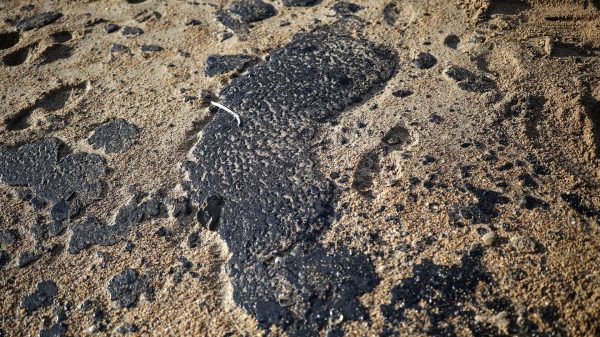
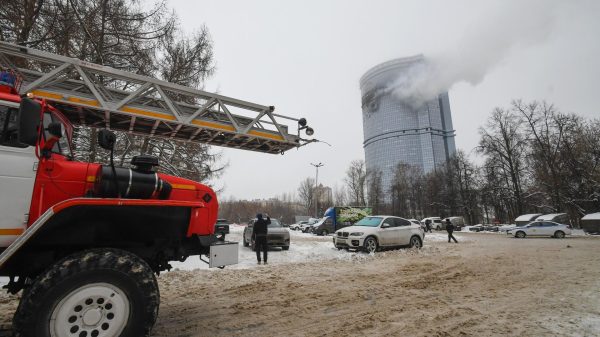


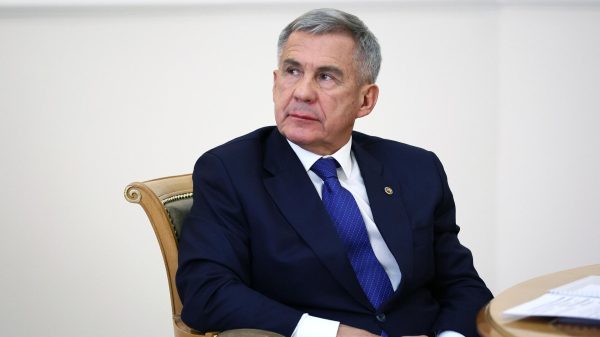





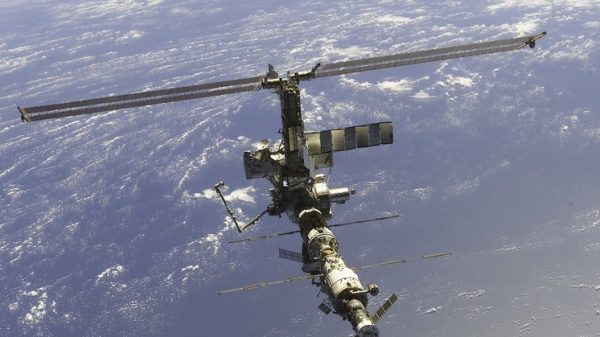

















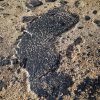




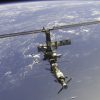









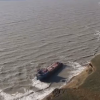




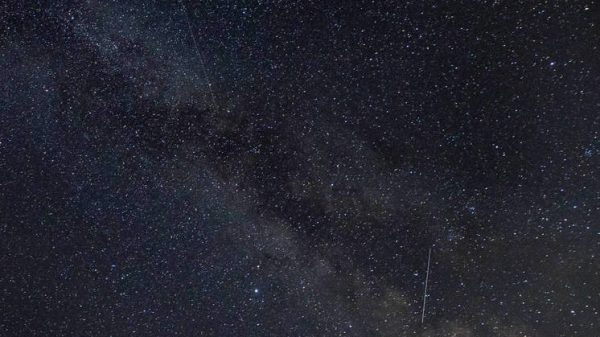
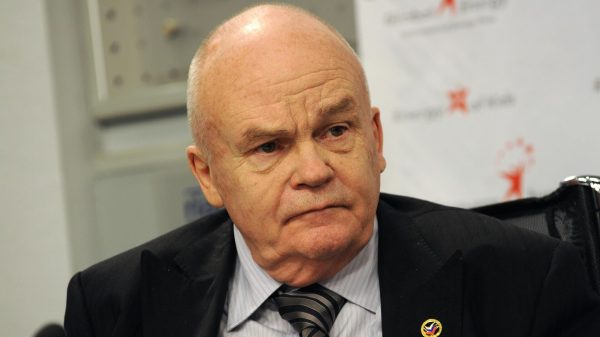

Свежие комментарии